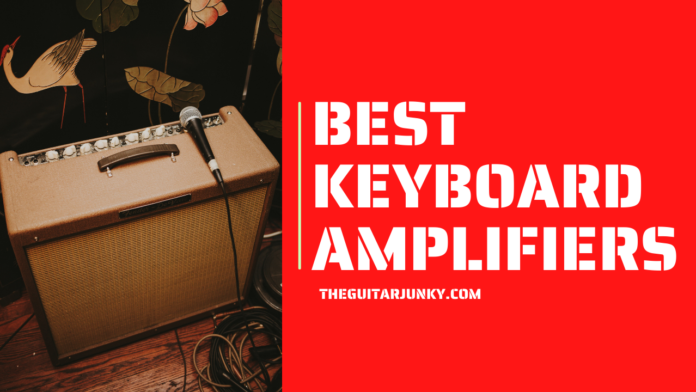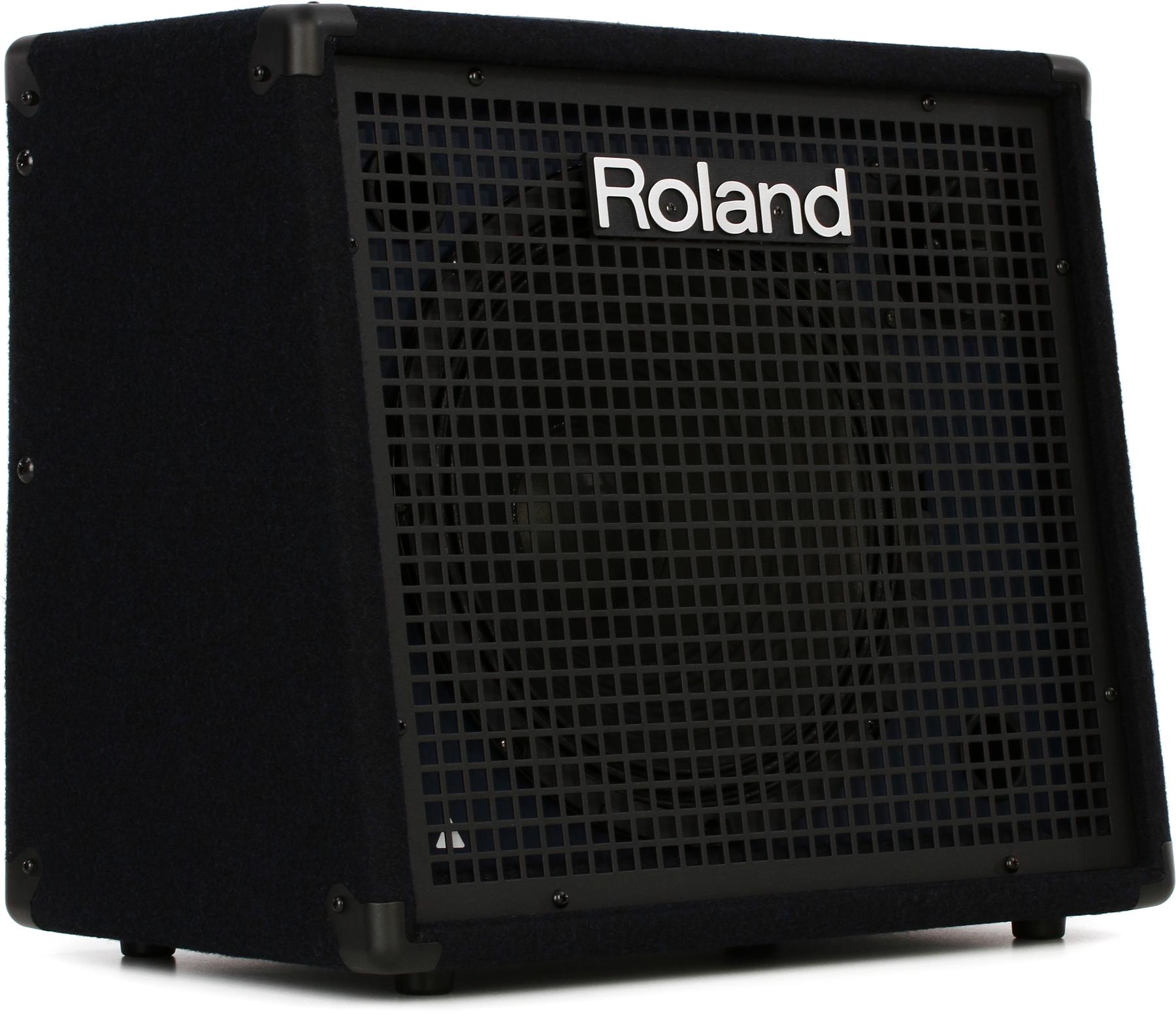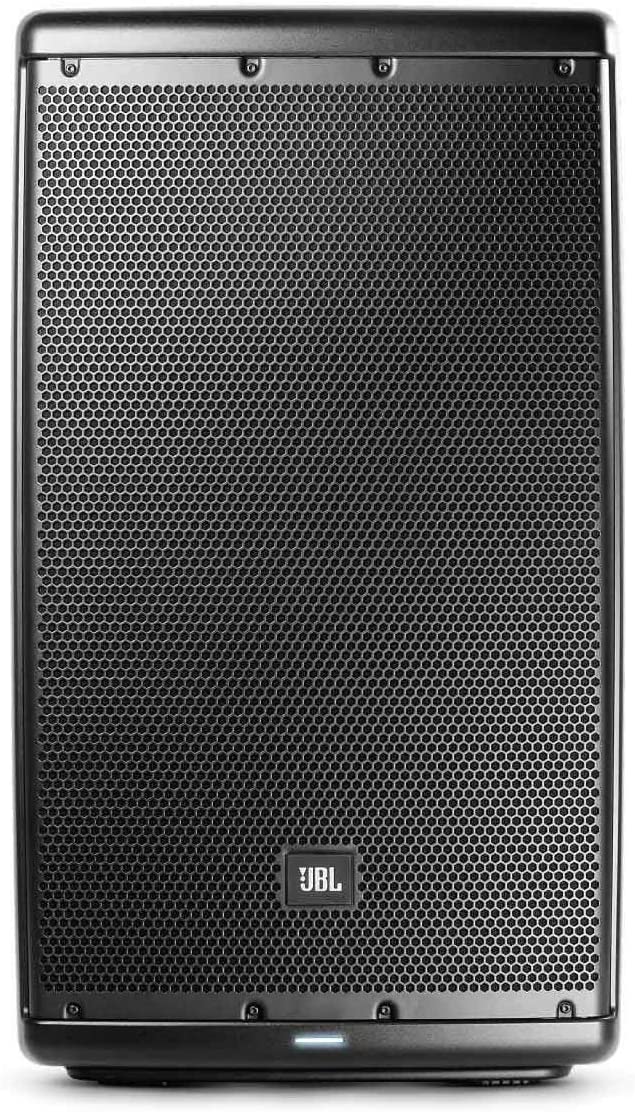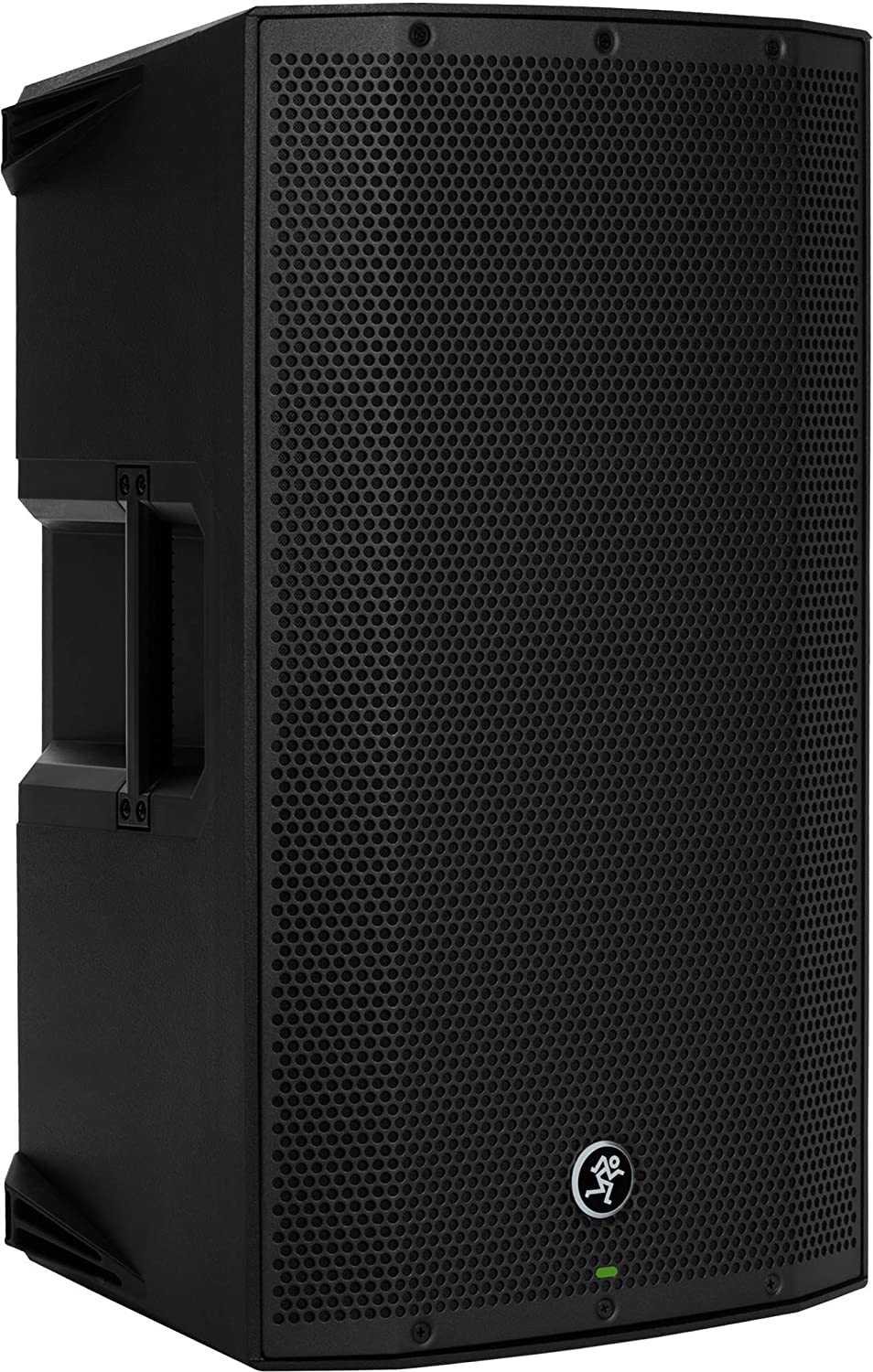Keyboard amplifiers act as external amplifiers for your instrument.
The best keyboard amp provides a wide frequency range considering keyboards generally utilize a broad tone arsenal.
Moreover, they make the keyboard’s sound stand out, enabling the player to hear themselves during the performance.
Out of the ten keyboard amplifiers I have reviewed, the JBL EON615 is the best overall.
This keyboard amplifier boasts high-quality specs, making it ideal for beginners and professionals alike.
But then, the other enumerated keyboard amplifiers are also excellent choices. Nevertheless, if you are still unsure, I have prepared a buying guide, reviews, and FAQs to help you with the selection.
Contents
Here are the best keyboard amps
- JBL EON615 – Best Overall
- Roland KC-200 – Best for small venues
- Mackie Thump12 – Best Portable Budget Speaker
- Yamaha DBR10 – Best Budget Speaker
- Behringer Ultratone KXD12 – Best high-powered amp
- Peavey KB 1 – Best for beginners
- QSC K12.2 – Best for Live Performances
- JBL EON One – Best Budget PA System
- Vox VX50KB – Best Portable Amp
- Motion Sound KP-612S – Best Mid-range Amp
Also Great | Editor's Choice | Budget Pick |
JBL EON615
The EON615 is their newest addition to the EON600 series and features a two-way powered PA speaker, a 15-inch woofer, and two XLR inputs.
This combination makes it ideal for indoor and outdoor applications as the speaker provides a wide frequency sound and uniform sound.
The JBL EON615 is made of polypropylene and comes with four handles and molded intended feet, making it durable and portable.
Another thing that makes the JBL EON615 is its connectivity since it comes with integrated Bluetooth capability that users can access through their phones.
Aside from that, users can also create, copy, and transfer saved presets to other connected speakers.
The EON615’s interface can support up to four speakers at once.
Pros
- Broad frequency range
- Durable and portable
- Integrated Bluetooth capability
- Numerous applications
Cons
- Bluetooth connectivity issues
Roland KC-200
The Roland KC-200 is one of the speakers in the company’s C series.
The KC-200 is known for its portability with its relatively small stereo.
Nevertheless, while it may be small, the KC-200 packs quite a punch, delivering 100 watts of power.
The KC-200 comes with four channels, enabling the user to connect other instruments and music equipment.
Once you plug in your earphones, the amp’s speakers automatically turn mute.
This keyboard amplifier features a 12-inch woofer and tweeter, providing a wide frequency range, higher output, and better stability.
The KC-200 also comes with an onboard mixing feature to enable the user to control the amp.
As such, the amp is ideal for recording, practicing, and performing.
Pros
- 100 watts of power
- Compact and lightweight
- It has an onboard mixing feature
- Ideal for smaller venues
Cons
- Relatively expensive
Mackie Thump12
The Mackie Thump12 is a 12-inch powered speaker and class D amplifier, providing 1,000 watts of power for the low end and 300 watts of power for the high-end.
The speaker’s Dynamic Bass Response provides more power to amplify the sound.
The Thump12 comes with four-speaker presets that you can further customize to fit your situation.
Mackie’s Thump12 also comes with two-channel mixers that feature Vita preamps and Wide-Z technology.
With this, this speaker can connect to microphones, other instruments, and other music equipment.
The Mackie Thump 12 weighs 36 pounds (13.2 kgs), making it lighter than similar speakers in the market.
Pros
- Affordable
- It comes with four-speaker presents
- Flexible mounting options
- Two-channel mixers
Cons
- Not the best build
Yamaha DBR10
The DBR10 boasts durability with its high-quality and durable build, despite being at a lower price point.
The Yamaha DBR10 features a 700-watt class D speaker, 10-inch woofer, and 1-inch precision compression driver, resulting in a broad frequency range.
Moreover, this speaker has a bi-amp design which provides a more balanced and cleaner sound.
Yamaha’s DBR10 allows the user to control the dB levels individually through its two-channel onboard mixer.
The DBR10 also has numerous connection options.
The first line comes with a combo jack that can accommodate XLR and TRS connections.
Meanwhile, the second line features another combo jack and an RCA output.
Pros
- Low price point
- It has a two-channel onboard mixer
- Provides balanced and clear sound
- It comes with numerous connectivity options
Cons
- Not the best low-end sound
Behringer Ultratone KXD12
The Behringer Ultratone KXD12 is part of the company’s Ultratone tone and boasts a 12-inch TURBOSOUND speaker, delivering 600 watts of power.
Moreover, the Ultratone KXD12 features a bi-amp design, with each woofer and tweeter having their loudspeaker.
As a result, the KXD12 amplifies properly without distorting the sound.
Behringer’s KXD12 also has a four-channel mixer and a seven-band EQ and a feedback detection system.
With this, this keyboard amp is versatile and can be used in both small and large venues.
The amp’s Klark Teknik processor comes with 100 effects presets, including chorus, delay, flanger, reverb, and the like.
This feature enables the user to play and experiment with various styles of effects.
Pros
- Features a bi-amp design
- It has a four-channel mixer
- Ideal to use in small and large venues
- Provides 100 effects presets
Cons
- Prohibits individual EQ channel control
Peavey KB 1
The Peavey KB 1 comes with a small 8-inch speaker that delivers 20 watts of power.
Aside from that, the speaker covers a broad frequency range, enabling you to play with different sounds.
With this combination, the Peavey KB 1 provides considerable depth while remaining clean and crisp.
The keyboard amp’s two-band EQ enables the user to fiddle and adjust with tone according to the application.
Moreover, it can connect to two instruments thanks to its two channels.
The product’s headphone port also encourages a silent practice session as once you plug in your headphones, the amp automatically mutes the speaker.
The keyboard amp’s simple interface and design make it ideal for beginners or those looking for a simple and affordable keyboard amplifier.
Pros
- Ideal for beginners
- Affordable
- It covers a decent frequency
- Simple design and interface
Cons
- Lacks extra features
QSC K12.2
What makes the QSC K12.2 popular is its power and capabilities.
Thanks to its digital signal processors and directivity matched transition, the QSC K12.2 can deliver 2,000 watts of power and covers a 75-degree even field.
These specifications ensure that the sound is amplified, making it ideal for outdoor and live performances before a medium to a large crowd.
Moreover, QSC’s K12.2 has a full frequency response with a range of 50Hz to 20kHz.
As such, you can hear high frequencies and deep basses without any distortions.
The QSC K12.2 also offers solid connectivity options with two XLR inputs and two XLR outputs, allowing the user to connect various instruments and music equipment.
Pros
- Ideal for live and big audiences
- Provides full frequency response
- It covers a 75-degree even field
- Solid connection options
Cons
- Expensive
JBL EON One
The JBL EON One is built with portability and efficiency in mind, featuring a built-in battery which is useful when you’re performing at remote places.
For a PA system, the JBL EON One is compact and weighs only 17.6 pounds.
The EON One features an 8-inch subwoofer and 1-inch driver, seven-channel mixers, a knob channel reverb in an easy-to-carry durable polypropylene cabinet.
The EON One’s speaker system delivers 120 watts of power and 112dB of clean and crisp audio, covering 100 x 50 degrees.
JBL’s EON One also comes with four channels to enable you to connect to various instruments and music equipment.
The eight-band EQ grants flexibility and control over the sound, enabling the user to adjust it using effect presets.
Pros
- It has a built-in battery
- Compact considering its features
- Affordable
- Ideal for large and live audiences
Cons
- Short battery life
Vox VX50KB
Vox is more known for its guitar amps; however, the VX50KB proves its proficiency in manufacturing high-quality keyboard amps.
The VX50KB is peculiar with its sound quality as it features Nutube circuitry.
Unlike other keyboard amps that aim to reproduce the input signal, VX50KB’s system adds a layer of warmth to their sound to mimic the tube-amp sound.
Vox’s VX50KB comes with a two-way tweeter and an 8-inch speaker, delivering 50 watts of power and covering a wide frequency range.
Moreover, the amp’s bass-reflex cabinet enables it to handle and enhance low frequencies to provide a clear and clean sound.
This keyboard amp comes with three channels for the user to connect their instruments.
The VX50KB also comes with a headphone output, letting the user practice quietly during the night.
Pros
- Old vacuum tube technology
- Has three channels
- Portable and compact
- It comes with three-band EQ
Cons
- No XLR input
Motion Sound KP-612S
The Motion Sound KP-612S comes with two 12-inch speakers, delivering 650 watts of power in a frequency range of 50Hz to 18kHz.
Its V-angled design enables the KP-612S to cover a wide area.
However, you can choose to expand this further thanks to its proprietary 3D Expander features.
These specifications result in clear and crisp audio in a broad frequency spectrum that covers a wide area.
With two channels, the Motion Sound KP-612S can connect to various instruments and music equipment.
Moreover, the three-band EQ enables the user to tweak and adjust their sound via the effect presets.
Pros
- It covers a wide area
- Broad frequency range
- Portable and durable
- Has three-band EQs
Cons
- Can’t control channels individually
Keyboard Amp Buying Guide
Finding the best keyboard amplifier can be a difficult task due to the big market.
Luckily, this buying guide will enumerate the essential factors you need to look out for when looking.
Sound Quality
The keyboard amp’s sound quality is the most vital factor you need to consider.
What’s the point of purchasing an amp if it doesn’t provide you with crystal clear audio and a broad frequency spectrum?
Sound quality is influenced by the speakers, sound processing choices, and the like.
Speakers
Speakers affect the sound fidelity; hence, you’ll need to pay attention to them.
Your keyboard amp should come with a woofer and tweeter, at the very least.
This combination produces a balanced response while simultaneously providing a decent frequency range.
To increase the frequency spectrum, consider adding a midrange speaker or similar higher-output speakers.
Some amps come with ports or strategically placed holes in the speaker for extended bass response.
EQ and Channels
The number of channels the keyboard amplifier dictates the number of instruments or equipment you can connect to it.
Most keyboard amps come with two channels, while premium models have four channels.
Each channel has its effect and volume controls, enabling you to adjust different instruments and equipment simultaneously.
However, the more channels an amp has, the more expensive it will be.
Built-in effects
New keyboard amplifier models come with built-in digital signal processing (DSP) and sound effects.
As such, you don’t have to purchase and invest in pedals, effect units, and the like.
Effects usually include chorus, reverb, overdrive, but some amps offer more complex sound effects.
If you often play live, choosing an amp with a built-in graphic equalizer and feedback protection system enables you to control your sound and enhance the overall performance.
However, again, amps with more built-in features tend to run expensive.
Power
Keyboard amplifiers come with different wattage specs, which are:
- Peak watts refer to the max amount of power the keyboard amp can produce while it’s on a peak. The amp does not stay at peak level indefinitely since it can damage it.
- Continuous or RMS watts provide a more realistic way of measuring wattage since it looks at the amp’s average power output by measuring the RMS voltage.
How much power you need will depend on where you will be playing.
As a general rule, a high wattage enables the keyboard amp to amplify the sound with minimal distortions.
If you play at larger or outdoor venues, then you’ll need a high-powered keyboard.
On the other hand, if you play solo or at a smaller venue, then you’ll need less wattage.
Inputs/outputs and stereo operations
Having numerous inputs/outputs in your keyboard amplifier is also essential.
XLR inputs enable you to connect microphones, whereas RCA inputs let you connect CD and MP3 players, and other similar devices.
Meanwhile, XLR outputs enable you to connect to a PA system for live performances.
Finally, headphone outputs are useful for indoor practices.
Portability
Keyboard amplifiers are generally portable and are lighter compared to other similar music equipment.
However, there are tiny keyboard amplifiers that are ideal if you want to carry them around.
A keyboard amp with 8-inch speakers is ideal for beginners, while professionals should use at least 15-inch speakers.
Editor’s Pick
Out of the keyboard amplifiers enumerated on the list, the JBL EON615 comes out as the best overall product.
This PA speaker comes in a durable and portable design and provides a broad frequency range and a stable performance, making it ideal for numerous applications.
The EON615 boasts high connectivity, too.
Aside from its XLR inputs, the system comes with an integrated Bluetooth capacity.
As such, the user can access and control the speaker using their phones.
If you are looking for the best keyboard amp in the market, then you might want to check out the JBL EON615.
FAQs
What is the difference between a keyboard amp and a guitar amp?
Guitar amps are designed specifically for guitars, enabling them to reduce bass and high frequencies and boost midrange tones.
These amps also “color” the original sound, producing their distinct warm tone.
On the other hand, keyboards can produce a broader frequency range.
Hence, keyboard amps are more versatile since they usually have a woofer, tweeter, and midrange speaker.
Because of this, using a guitar amp on a keyboard will be unsatisfactory as it forces the keyboard to lower frequencies.
What is the difference between a keyboard amp and a PA system?
Keyboard amplifiers and PA systems often share numerous characteristics like wide frequency range and EQ controls.
However, these systems also have their differences.
For one, keyboard amps are more portable than PA systems.
Keyboard amps are more “all-in-one” units and come with wheels and handles for easy transportation and movement.
Meanwhile, PA systems tend to be bulkier and contain more loose parts.
Another difference lies in the number of inputs.
PA systems offer more inputs, enabling the user to plug in and connect various instruments and other music equipment.
This quality is what makes PA systems ideal for small bands and groups.
On the other hand, keyboard amps are aimed at solo performers or those who perform in smaller venues.
Are keyboard amps only used for keyboards?
No, keyboard amplifiers provide a broader frequency spectrum.
Hence, they can be used on numerous instruments like the acoustic guitar, drums, electric/digital pianos, synthesizers, etc.
How much do keyboard amps cost?
It depends on your budget.
Keyboard amplifiers come in three price ranges: budget, mid-range, and premium.
Budget keyboard amps cost less than a hundred bucks, making them popular among beginners or those on a budget.
These amps can get you through performing in very small venues or during practices.
Mid-priced keyboard amps are ideal for those who want to try their hand at performing before a small- to a mid-sized audience.
They come with various connectivity options, enabling the player to hook up other equipment.
Premium keyboard amps are the most expensive, but also boast the highest quality.
As such, you often see them being used by professional keyboard players or those in a band.













